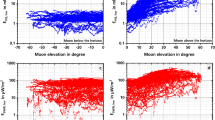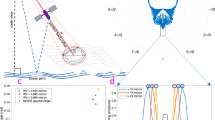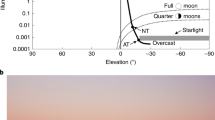Abstract
Paul and Jones1, discussing the blue sun caused by selective absorption of a cloud of uniform spheres of radius r in light of wave-length λ, have considered the curve relating K (the ratio of effective to geometrical cross-section of a particle) and α, where α= 2πr/λ. They suggest a simple physical explanation of the maxima and minima of this curve on the basis of resonances. The maxima and minima, in the case of small dielectric spheres can also be explained from the principles of physical optics; this point of view was used by Van de Hulst2 in considering some aspects of the subject that could not so readily be treated by electromagnetic theory.
This is a preview of subscription content, access via your institution
Access options
Subscribe to this journal
Receive 51 print issues and online access
$199.00 per year
only $3.90 per issue
Buy this article
- Purchase on Springer Link
- Instant access to full article PDF
Prices may be subject to local taxes which are calculated during checkout
Similar content being viewed by others
References
Paul, W., and Jones, R. V., Nature, 168, 554 (1951).
Van de Hulst, H. C., Recherches Astr. de l'Observ. d' Utrecht, 11, Pt. 1 (1946).
Lothian, G. F., and Chappel, F. P., J. App. Chem. (in the press).
Houghton, H. G., and Chalker, W. R., J. Opt. Soc. Amer., 39, 955 (1949).
Lowan, A. N., Nat. Bur. Stand., App. Maths. Ser., No. 4 (1949).
Author information
Authors and Affiliations
Rights and permissions
About this article
Cite this article
LOTHIAN, G. Blue Sun and Moon. Nature 168, 1086–1087 (1951). https://doi.org/10.1038/1681086a0
Issue Date:
DOI: https://doi.org/10.1038/1681086a0
This article is cited by
-
über das optische Verhalten von kugeligen, isotropen Teilchen in verschiedenen Medien
Kolloid-Zeitschrift (1961)
Comments
By submitting a comment you agree to abide by our Terms and Community Guidelines. If you find something abusive or that does not comply with our terms or guidelines please flag it as inappropriate.



